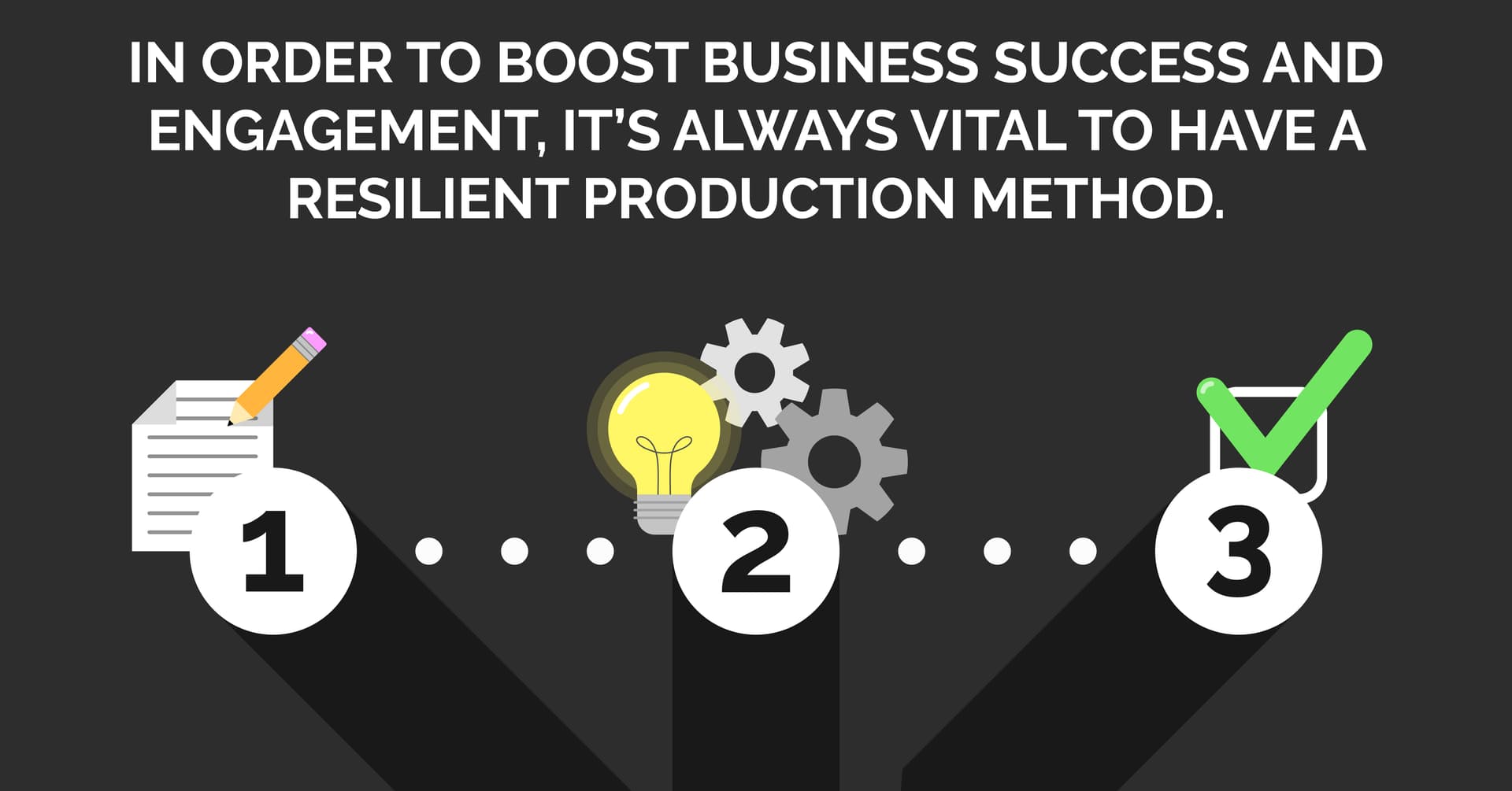Create A Powerful Content Production Process
What Does Content Mean for Your Business? Crafting memorable content isn’t easy, but it’s important to get it right. No matter your platform, well-written, well-timed digital content effectively does your work for you.

What Does Content Mean for Your Business?
Crafting memorable content isn’t easy, but it’s important to get it right. No matter your platform, well-written, well-timed digital content effectively does your work for you. It can increase your readership, sales, interactions, and performance on google exponentially. A strong content production process can help ensure you continue to turn out the best possible content.
Despite what self-proclaimed marketing gurus might tell you, there’s no exact science to effective online content. What works for one business may not work for another. Content production is a different story. In order to boost business success and engagement, it’s always vital to have a resilient production method. This is your road map for every piece you write – a repeatable, step-by-step process that works for many different content types.

The Content Production Process
First, it’s important to define content for your company. Digital content is a many-headed monster. From info-graphics to blogs and e books, most businesses publish a cocktail of content types to maximize their platform. Choosing yours is important, but without a solid, reproducible production process, the content won’t be able to serve its purpose. Best practices vary depending on your team, your timeline, and your goals. If you’re not sure where to start, there are many resources and strategy courses available to help get you on your feet.

Structure the Production Team
The larger the content production team, the more intricate your planning will need to be. However, each member should understand the bigger picture and see where their role fits in. Production content teams often consist of writers, designers, content strategists, and content editors. Your team may have one or more of each, or you may be a one-man-band filling all of these roles.
Get Organized
No matter what your team looks like, producing quality content comes down to organization. Before you do anything else, create a clear, long-range plan. How much content do you want to produce by the end of this year, this month, this week? Does this goal realistically fit with the time and tools you have on hand? Create a content creation road map and sub-tasks. If necessary, create sub-teams that will meet independently along the way.
Make sure that responsibilities stay clear wherever there are shared tasks. Know where your files are, who will be working on them, and when. And even if you’re the sole producer, check in on your timeline and production structure frequently.
Create a Style Guide
Codifying the content types you publish frequently will speed up your production rate. This may mean creating basic templates, style guides, and word count estimates for blogs and marketing emails. At first you might find yourself borrowing from what works on google and other businesses like yours. With platform performance analysis, this style guide will become more and more your own over time.
Don’t Work Like an Assembly Line
As your content creation team gets to work, see how many pieces of the puzzle you can build at the same time. This is where the content process will be very different depending on your team’s size. A single content creator can really only work on one thing at a time. With a team of two or more, though, avoid waiting for one person to finish a task till the next can begin. This is a nearsighted approach that ultimately costs you time and money – not to mention energy. It also leaves more room for error.
Manage Deadlines and Work Flow
In the beginning, many deadlines may only be rough estimates. Still, they’ll help propel you toward your goals, and as your content production process settles into place, projections will become more and more accurate.The most important part of setting deadlines for new content is a realistic idea of what needs to be done. Don’t forget sub tasks like copy/design integration, headline revision, and legal review.
Repurpose Content When You Can

Learn how to effectively reuse your content to minimize future work. Publishing somewhat redundant content is actually helpful in a number of ways. First, it saves your business time. But beyond that, strategically recycling content can be an effective branding strategy. Every good business model builds on things that are already working. In your content review, take a look at how your existing content is fitting into your overall strategy, and look at what you can re-purpose in the future.
Learn From Your Content
Content development happens over time. Don’t get too attached to your production process – it will morph from one project to the next – but do pay attention to it. A robust content inventory process is essential to managing future output. It will help you find ways to better target your audience’s needs, and reveal angles you missed the first time around.
The difference between a good and bad content production process can be the difference between effective and fruitless marketing. Make sure your strategy takes you quickly and steadily in the right direction.